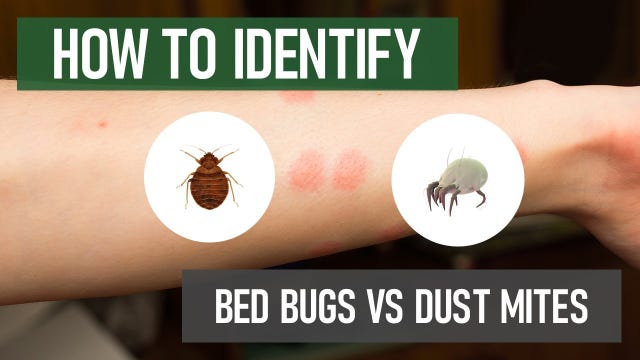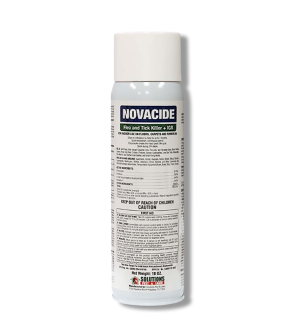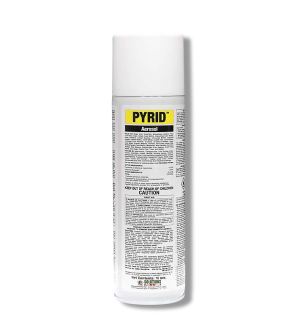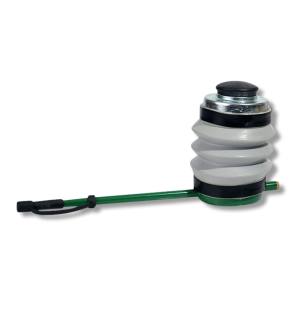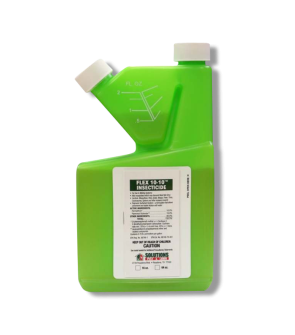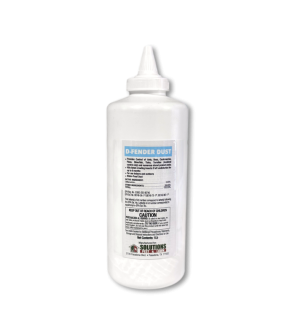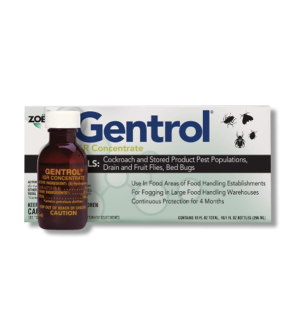Gain access to personalized product screening, the best pricing, rewards, and more!
Most Effective Products
Bed Bugs Vs. Dust Mites
This page is a general identification guide for bed bugs and dust mites. Neither should be directly contacted nor should furniture be moved until bed bugs are eliminated. To remove bed bugs and dust mites from your home, follow the links within this DIY guide and use the recommended products for complete pest control.
Half of a homeowner's life is spent in their bed, but when itching or movement against their skin occurs, this causes immediate alarm. There is a strong possibility that one of these two creatures is creating these conditions, and that is the bed bug or dust mite. These two pests are different organisms that are both found in the home.
A bed bug is a parasitic insect, and a dust mite is a microscopic spider that is too small to be seen by the naked eye. While neither of these pests is ideal within your home, they are attracted to and thrive on different things. Bed bugs are blood-sucking pests that bite people and animals, whereas dust mites feed on dead skins left by people, ticks, and spiders. Dust mites do not directly bite homeowners, but their activities can cause skin irritation.
Bed bugs and dust mites both pose a series of health and cleanliness hazards within homes. Without proper identification, homes are at risk for a dramatic increase in pest activity and populations, leading to an increase in product purchases. Read on to learn more about the risks associated with bed bugs and dust mites and the methods to control and prevent these pests.
Identification
Before proceeding with a treatment approach, you will need to know what a bed bug and dust mite look like. Misidentification can lead you to use the wrong products or unnecessary treatments, wasting time and money. To identify dust mites, you will need a microscope.
For a physical reference, examine the image above. On the left is a bed bug, and on the right is a dust mite.
- Bed bugs have oval-shaped but flat bodies, six legs, and two pairs of antennae.
- The bodies of dust mites are unsegmented, with a pear shape, four pairs of legs (eight total), no eyes, and one mouthpart that serves as their head.
- Before ingesting blood, bed bugs are rusty-brown to mahogany in color. After feeding, their color changes to reddish-brown.
- Dust mites have different ranges in color, from tan, reddish-brown, and creamy blue to white.
Use the image and description above to help you properly distinguish between bed bugs and dust mites. If unsure, contact us with a photo of the pest by phone, email, or in person. You may also bring a sample of the pest in a closed-sealed container to one of our store locations.
Habitat
As a homeowner, one of the questions you may have is, how did I get a bed bug or dust mite in my home? Every home has dust mites, but their rate of activity depends on the humidity levels. These pests, like bed bugs, cannot survive in outdoor environments.
Dust mites do not drink water through their chewing mouthparts. Instead, they will absorb the moist air within your home or warm air protruding from your body as you sleep. Besides mattresses, dust mites can also be found in carpets, curtains, furniture, stuffed toys, mattresses, pillows, bedding material, and anywhere else that dust (skin) collects. For accurate confirmation, with a gloved hand, take a dust sample from your home and examine it underneath a microscope for dust mites.
In contrast to dust mites, bed bugs can survive in indoor and outdoor environments, though they prefer to inhabit the inside of homes. Bed bugs can be found in bushy or wooded areas, tall grass blades, leaf litter, and other organic debris. They come inside homes by attaching themselves to your clothing, shoe laces, fibered suitcases, other fabric cases (if staying in a hotel, motel, etc.), and pets' fur. Once inside homes, bed bugs hide in tight, dark crevices and cracks around the homeowners' sleeping and living areas. You can find these pests on furniture, light switches, outlets, picture frames, bed frames, mattresses, bedding, and baseboards.
Signs of Pest Activity
Skin reactions or irritations are one of the most common signs of bed bugs and dust mite activity. In the image above, a bed bug bite is shown on the left, while a skin irritation caused by a dust mite is shown on the right.
Dust mites can cause serious health hazards, especially to people suffering from asthma or allergies, such as unusual coughing, watering eyes, sneezing, or runny nose. These effects are the most common of dust mites, but other signs include a red and itchy rash appearing on parts of the body that come into contact with mattresses or other furniture surfaces. Consistent itching can cause slightly elevated bumps or open sores. These reactions come from leftover dust mite fecal matter and body fragments.
Skin irritations from bed bugs can be seen as small, red, puffy bumps with red marks at the center. Bed bug bites will appear as lines or groupings on your neck, arms, back, or trunk of your body.
Differences Between Bed Bugs and Dust Mites
- Bed bugs can easily be seen without microscopes or other optical equipment. Physical identification at first glance is not possible for dust mites.
- Bed bugs are insects with 6 legs, whereas dust mites are arachnids with 8 legs.
- Dust mites are scavengers that feed on the dead skin of people and other pests. Bed bugs feed directly on the blood of people and sometimes animals.
- In contrast to bed bugs, dust mites hide in dark areas with exposure to moisture, whereas bed bugs mainly infest mattresses and dark, dry crevices such as bed frames or electrical outlets.
- Signs of dust mite activity could include common health or allergy issues such as asthma, sneezing, runny eyes, red and watery eyes, and sometimes red and irritated skin. Bed bugs leave long-lasting red spots or welts.
Similarities Between Bed Bugs and Dust Mites
- Bed bugs and dust mites mainly infest indoor environments like mattresses or furniture.
- If left untreated, these pests can create health issues and skin irritations.
- Both will hide in dark areas until your skin makes contact with furniture. Dust mites do not directly make contact with you; they hide in locations with access to moisture, like pillows.
Key Takeaways
Can You Feel Dust Mite and Bed Bug Bites?
- Dust mites do not bite but cause allergic reactions in some people through their droppings. Bed bug bites are not immediately noticed, but you may experience a burning sensation over time before large, raised bumps appear on the skin.
How to Get Rid of Dust Mites
- Begin by washing and drying bedding and other fabric materials on high heat and vacuuming excess dirt and dust around the home. Then, apply Pyrid Insecticide Aerosol and Novacide Flea and Tick Killer. Once these two products have dried on their labeled treated areas, apply Clean Rest Pro Mattress Encasement.
How to Get Rid of Bed Bugs
- Leave all infested furniture and personal belongings in place until the bed bug infestation is removed. We recommend using Flex 10-10, Pyrid Insecticide Aerosol, Gentrol IGR Concentrate, D-Fender Dust, and a Handheld Pesticide Duster to apply D-Fender Dust.






